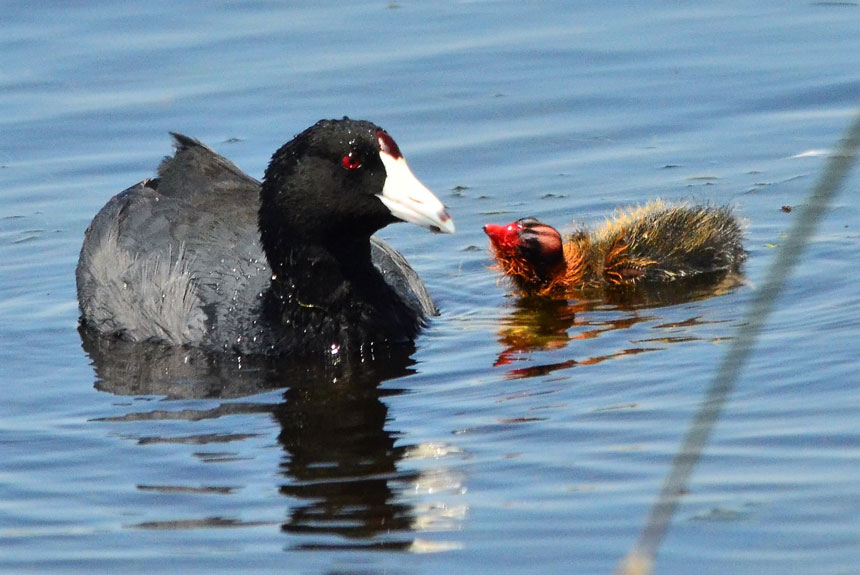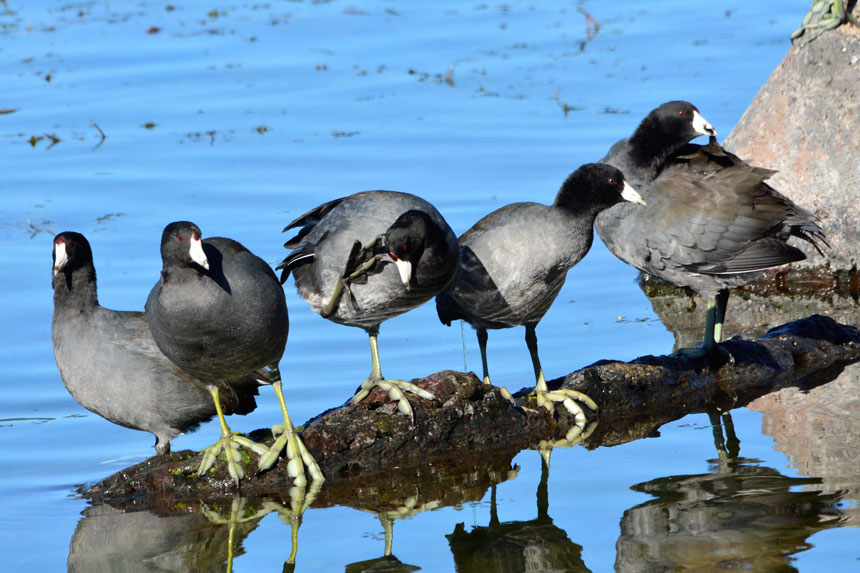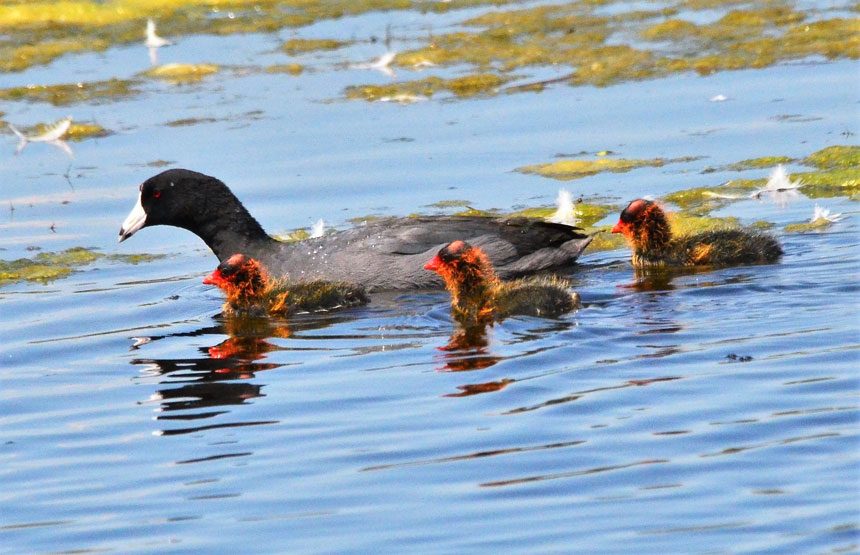SCHIESS: Coots-old coots, no respect
Published at
One of the most despised birds in the world is a coot. Our American Coot is considered unattractive, unwanted, a pest, and grumpy. Every fall and spring they gather in large flocks before migration, pulling aquatic plants and muddy up the water so bad fishermen have a hard time catching fish near their feeding. It is not cool to be the first birder in the area to record the arrival of a coot and no hunter would be caught bragging about bagging one.
Coots are not considered inspirational or comical and are often considered a pest as they get in large flocks to migrate. In late September or early October they congregate in the shallows of Henrys Lake in flocks near a thousand birds. When these birds get to their wintering areas in California, the large flocks will feed on golf courses, covering greens with their feces.
Last year, hundreds of coots became frozen in the ice where they became food for eagles and ravens while trying to escape their ice-entombment. Hopefully they will not miss the memo and will make it to California to harass the golfers there.
Gracefulness and beauty are not assets of these plumbeous colored birds. A pure black they are not. Their color is a dark lead-colored gray that appears dull especially as they try to fly. Unable to get airborne without beating the water to a froth with their wings as their lobed feet churn the water, they have gained the name “splatterers.” When large flocks take off with water flying all over the place the flock is called a “commotion” or a “swarm” of coots.

Coots are professional thieves. They are kleptoparasitic, stealing food from other birds when they feel lazy and do not want to hunt themselves. At an early age they learn this pick-the-bill art. Baby coots, somewhat attractive in their frosty red head covering, usually have plenty of aquatic slime to eat, but they prefer to take their food from adult coots or even adult ducks and geese.
That brings us to the term “old coot.” Have you ever been called an “old coot, or have you called someone else by that derogatory name? Awhile back a young boy called me an “old coot.” When I inquired what a coot was, he responded that I was one because his dad said I was.
In analyzing what a coot is, I find that I fit the description fairly well; as do most of the gentlemen I recreate with. In fact twice each year I am involved with groups of “old coots” that are unattractive, grumpy, unwanted at times, pests, and gray. Like coots our redeeming value may be that our kids and grandkids are cute.

During the summer, a group of fly fishing “old coots” meet at the mouth of Targhee Creek on Henrys Lake where they get there early and bark or stare down any fishermen who might invade their perimeter. Then when one gets a fly that is producing, they talk in code to relay the information to the others. When a perimeter stranger asks what is the fly for the day, the usually reply is, “a fly.”

The winter “old coots” shows up most mornings on the ice at Ririe Reservoir. They are easy to recognize with their four-wheelers and in a tight group. If the temperature rises above 40 by mid-morning, several may be shirtless exposing a mass of gray hair. But unlike coots the gray is a lighter shade that can be described as glaucous or a salt and pepper gray. This group may appear to be unfriendly, but unlike the summer “old coots” they will help beginners learn how to catch the Ririe kokanee.
Coots and “old coots” may not be related, but both of them can be very interesting when you observe them closely; and beware who you call an “old coot. You may someday be one; hopefully.
Living the Wild Life is brought to you by The Healing Sanctuary.


